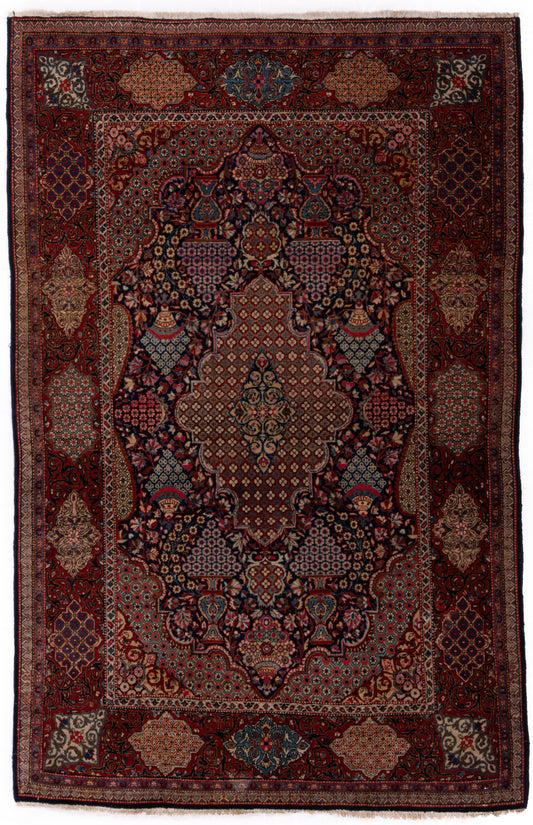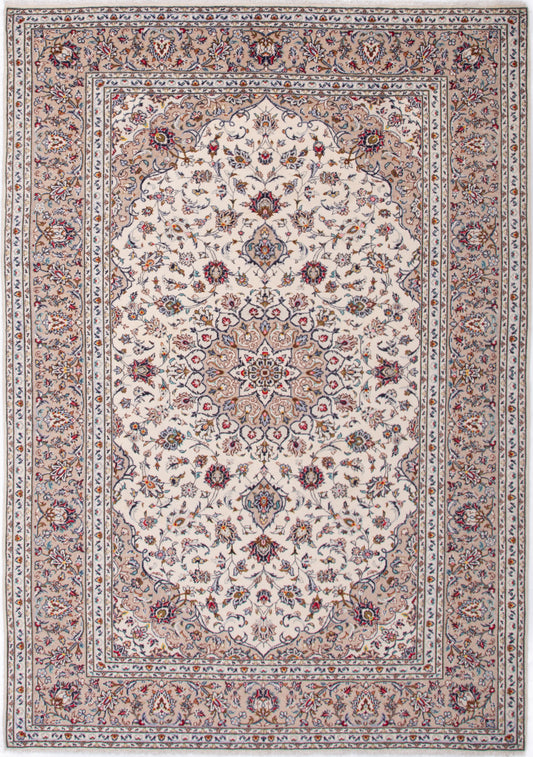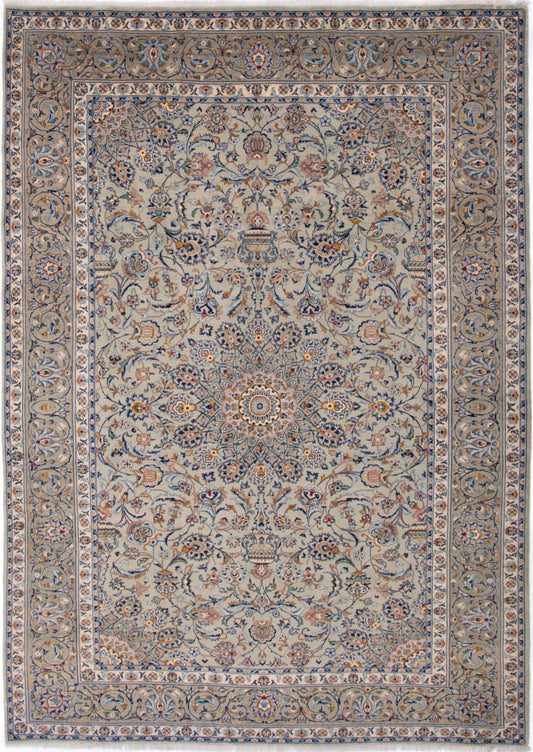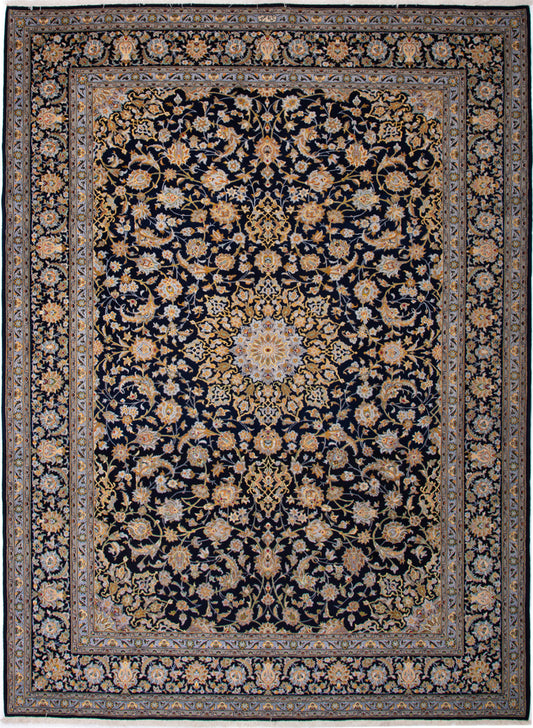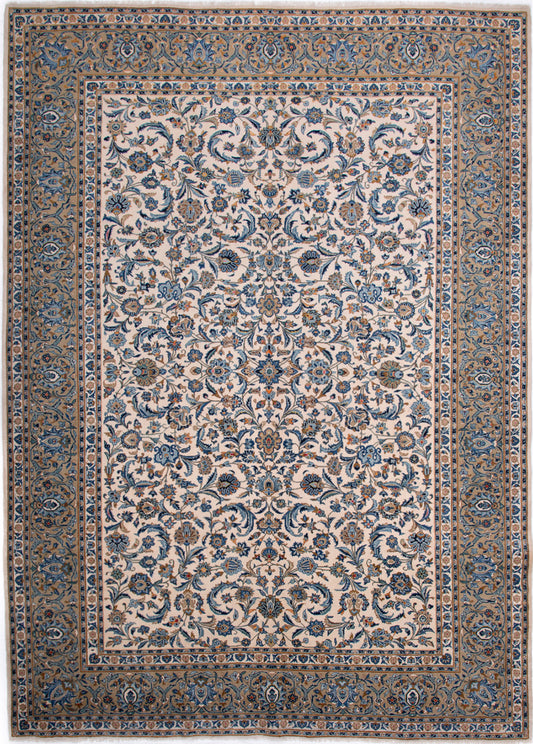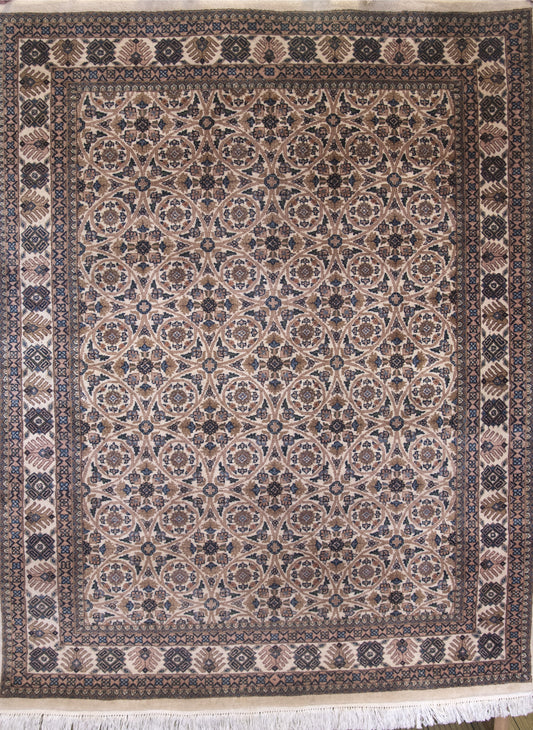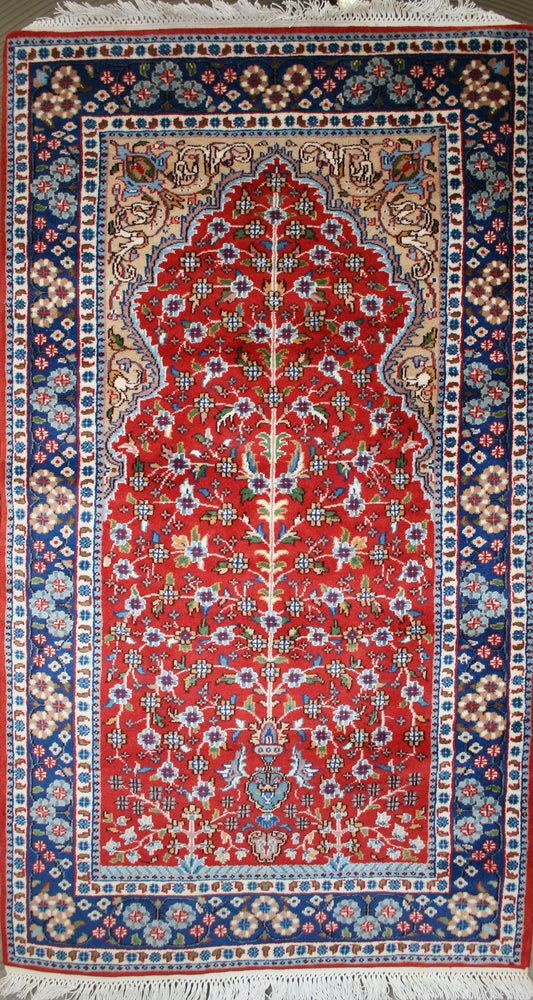Kashan Rug History & Origin Guide
Rugs from Kashan
The city of Kashan has been a major centre for rug production for centuries. The first known mention of these rugs dates back to the 16th century during the Safavid dynasty, when the city was a major centre for the production of high-quality silk and wool rugs. These early Kashan rugs were characterised by their fine weave, high knot density, and intricate patterns and motifs.
During the 18th and 19th centuries, Kashan rug production reached its peak. The city was home to several royal rug workshops, which produced some of the most beautiful and expensive rugs in the world. These rugs were highly prized by the wealthy and powerful, and were often commissioned for use in royal palaces and other grand buildings.
Kashan rugs are known for their intricate, curvilinear designs and motifs. These designs are characterized by rich, usually floral patterns woven in a harmonious and balanced manner. The most common motifs found in Kashan rugs include the central tear-drop shaped medallion. Some other common motifs and patterns include the "boteh" (a stylized floral or paisley shape), medallions, urns, and vases. These motifs are often arranged in repeating patterns across the field of the rug, and are often surrounded by intricate borders.
Another popular pattern is the "Tree of Life" pattern, which features a central tree with many branches, and is said to symbolize the connection between the earth and the heavens.
In the 20th century, Kashan rug production declined due to economic and political changes in Iran. However, in recent years there has been a resurgence of interest in these rugs, and many artisans are once again producing high-quality Kashan rugs using traditional techniques. These rugs are highly sought after by collectors and enthusiasts of traditional Persian art and culture.
Today, Kashan rugs are still handmade using traditional techniques passed down from generations, They are known for their fine weave, high knot density, and intricate patterns and motifs. They are often made with silk, wool and cotton. They are also known for their use of natural dyes, which give them a unique beauty and richness of colour that is difficult to replicate with synthetic dyes.
Highly prized by the wealthy and powerful for centuries, Kashan rugs are still highly sought after today by collectors and enthusiasts of traditional Persian art and culture.
The City Of Kashan
The history of Kashan dates back to the Elamite period (2700-539 BC), and it was later conquered by the Achaemenids, the Parthians, and the Sassanians. In the early Islamic period, Kashan was a centre of learning, arts, and commerce. It was also an important centre for the production of ceramics, textiles, and carpets.
During the Seljuk period (11th-13th centuries), Kashan became an important hub for the production of ceramics and textiles, and it was also known for its fine architectural decoration and tilework. In the Safavid period (16th-18th centuries), Kashan was a major part of the silk trade and a centre of artistic production, particularly in the production of ceramics, textiles, and rugs. Kashan was also an important area for the Qajar dynasty (1789-1925), during which the city continued to be an important centre of arts and crafts, and it was also a fulcrum of political power.

Today Kashan is known for its traditional architecture, including the traditional houses and public buildings, such as the Fin Garden, which is a UNESCO World Heritage site.
Some of the famous buildings in Kashan include:
- Agha Bozorg Mosque: This mosque, built in the 18th century, is considered one of the most beautiful and well-preserved examples of Islamic architecture in Iran. It is characterized by its elegant tilework and intricate geometric patterns.
- Tabatabai House: This traditional Iranian house was built in the 19th century and is considered one of the finest examples of traditional Persian residential architecture. It is known for its beautiful tilework, ornate plasterwork, and intricate wooden latticework.
- Boroujerdi House: Another traditional Iranian house, it was built in the 19th century and is notable for its traditional architecture, elegant tilework, and intricate plasterwork.
- Fin Garden: This beautiful garden, built in the 16th century, is one of the oldest examples of Persian gardening and is considered a masterpiece of Persian garden design. It is known for its intricate water features, including fountains and channels, and its beautiful tilework and plasterwork.
- Sialk Hill: This historic site, located just outside of Kashan, is one of the oldest known settlements in the region and is believed to date back to the 7th millennium BC. It is home to several ancient ruins, including a ziggurat, and offers a glimpse into the region's ancient past.

These buildings and structures are a testament to the city's rich history and cultural heritage, showcasing the skill and creativity of the artisans and architects who built them. They are also a great way to learn about the traditional Iranian architecture and the art of tileworks, plasterworks and wooden latticework.
Browse Our Current Selection of Kashan Rugs
-
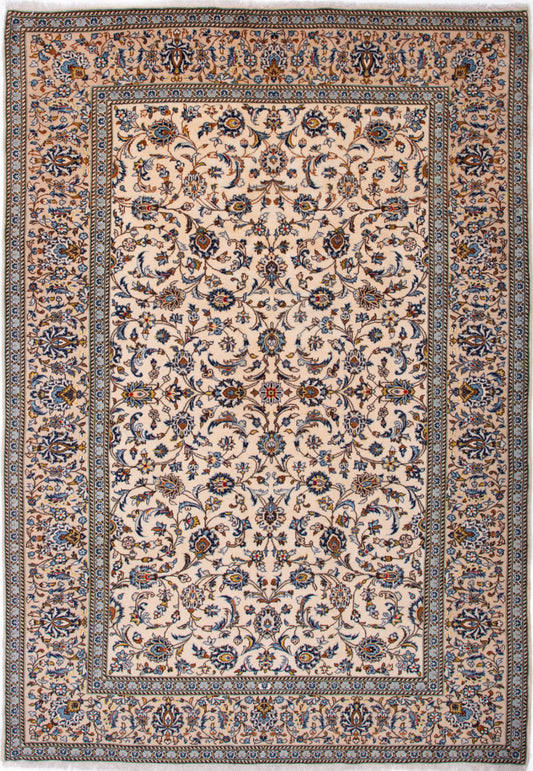 Sold
SoldPersian Kashan Rug
Regular price £1,805.00Regular priceUnit price / per -
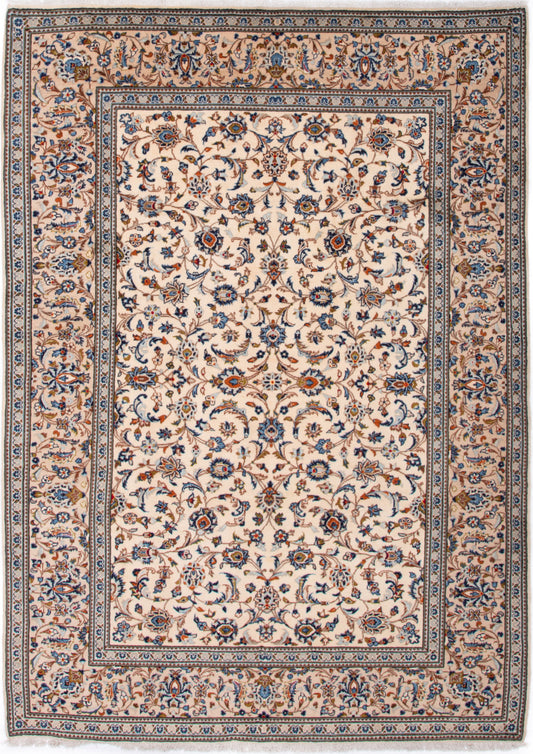 Sold
SoldPersian Kashan Rug
Regular price £1,805.00Regular priceUnit price / per -
Semi-Antique Persian Kashan Rug
Regular price £3,715.00Regular priceUnit price / per -
 Sale
SalePersian Kashan Rug
Regular price £5,095.00Regular priceUnit price / per£6,695.00Sale price £5,095.00Sale -
 Sale
SalePersian Kashan Rug
Regular price £1,905.00Regular priceUnit price / per£2,655.00Sale price £1,905.00Sale -
Persian Kashan Rug
Regular price £1,805.00Regular priceUnit price / per -
Persian Kashan Rug
Regular price £3,165.00Regular priceUnit price / per -
Persian Kashan Rug
Regular price £4,015.00Regular priceUnit price / per -
Persian Kashan Rug
Regular price £4,035.00Regular priceUnit price / per -
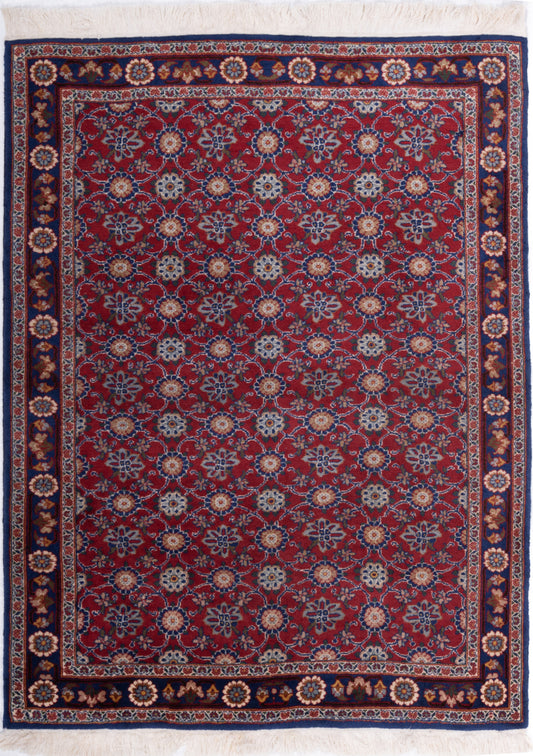 Sold
SoldPersian Kashan Rug
Regular price £635.00Regular priceUnit price / per -
Pak-Persian Kashan Rug
Regular price £1,165.00Regular priceUnit price / per£1,375.00Sale price £1,165.00Sale -
Pak-Persian Kashan Rug
Regular price £745.00Regular priceUnit price / per£955.00Sale price £745.00Sale



